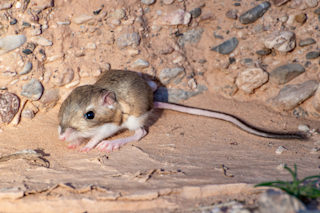A healthy, balanced diet is a great way to live to a ripe, old age. But even more important is avoiding being part of someone else’s healthy, balanced diet.
Few creatures on this planet enjoy the distinction of sitting on top of their local food chain. Even those that rely on killing others for sustenance must sometimes avoid other, bigger predators; for every great white shark, there is a potential killer whale attack.
But prey species, large and small, have developed a number of unique tactics to avoid being eaten. Here are a few examples of some of the stranger ways they repel, hide from or otherwise sidestep predators.
1. Extreme Camouflage
Hiding is a great strategy. Camouflage is a widely used tactic in the wild, and even in the human realm, though it usually amounts to donning colors that help you melt into the background — or looking like a leaf or a stick.
Cuttlefish, however, can take deception to a new level. The intelligent invertebrates actually change the texture of their exterior in order to match everything from bumpy coral to algae, rocks or seaweed.
Read More: 4 Hidden Ways Animals Camouflage Themselves
2. Karate Kicks
Like most rodents, desert kangaroo rats are popular menu items for many would-be predators in California. The nocturnal critters appear meek and tasty, hopping along on their back legs like the marsupial they get their name from.
But while kangaroos are known to box, the desert kangaroo rat is more of a kickboxer. When attacked by predators like sidewinder snakes, the rodents execute stunt-like aerial kicks that smack snakes away in a matter of milliseconds.
3. Drop a Tail, Drop a Body
Geckos and many other lizards are well-known for sacrificing a tail when predators get too close for comfort. They drop their tails through a process called autotomy, and the appendage often continues to wiggle for a period even after separation — a perfect distraction.
But don’t feel too sorry them, as many lizards can regrow their tails.
Crabs, spiders and other creatures can also regrow lost limbs. The strangest in this category are two species of sacoglossan sea slug, which decapitate themselves in order to grow a whole new body.
This isn’t done to avoid your typical predator, researchers believe. Instead, the slugs might drop their bodies to rid themselves of parasites.
Read More: How These 4 Animals Can Regenerate and Why Humans Can’t
4. Lie About Your Size
If your attacker is large, sometimes the best thing you can do is pretend you’re just as big. The frilled lizard, for example, is the real-life version of the dinosaur that ate Dennis Nedry in the first “Jurassic Park.” It puffs out large flaps of skin from its neck to make a fearsome face.
The oceans are also full of such examples, including the pufferfish. But the swellshark is particularly unique: When faced with predators, it will bite its own tail and inflate like an inner tube by sucking in water.
The sharks do this inside a crevice, making it very hard for predators to find something to latch onto. Plus, their hides are very thick — just imagine trying to sink your teeth into a rubber tire.
5. When All Else Fails, Play Dead
The eastern hognose snake incorporates several strategies to avoid getting eaten.
Its brownish-beige patterning provides camouflage in leaf litter, and its general appearance as a non-venomous serpent isn’t too different from venomous vipers. It can also puff up its head to make it look larger.
But the hognose employs perhaps its greatest strategy when nothing else works: These snakes flip over on their back, and writhe around in death throes that seem to contort their bodies unnaturally. To really sell the act, they also often defecate on themselves and release a musk that smells incredibly foul.
Read More: Watch: Hognose Snake Fakes Death In Most Overacted Way















